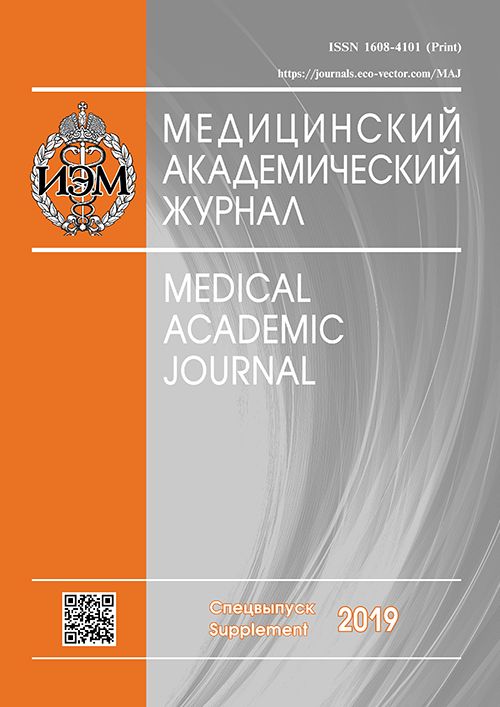THE GABA-ERGIC SYSTEM DOES NOT CONTROL THE NOCICEPTIVE RESPONSES OF PRIMARY SENSORY NEURON
- Authors: Penniyaynen VA1, Podzorova SA1, Terekhin SG1, Krylov BV1, Plakhova VB1
-
Affiliations:
- Pavlov Institute of Physiology of the Russian Academy of Sciences
- Issue: Vol 19, No 1S (2019)
- Pages: 44-45
- Section: Articles
- Published: 15.12.2019
- URL: https://journals.eco-vector.com/MAJ/article/view/19317
- ID: 19317
Cite item
Abstract
The aim of the study was to elucidate the molecular mechanisms of the interconnection of the GABA-ergic and nociceptive systems at the level of the peripheral division of the CNS. The data obtained indicate that GABA does not affect the activation gating device of the NaV1.8 channel of the primary sensory neuron responsible for coding pain signals.This agent in a wide range of concentrations also does not affect the growth of neurites of sensory neurons of embryonic nervous tissue. These results confirm our assumption, expressed earlier that the asynaptic membrane of the primary nociceptive neuron is not under the control of the GABA-ergic system.
Keywords
Full Text
About the authors
V A Penniyaynen
Pavlov Institute of Physiology of the Russian Academy of Sciences
S A Podzorova
Pavlov Institute of Physiology of the Russian Academy of Sciences
S G Terekhin
Pavlov Institute of Physiology of the Russian Academy of Sciences
B V Krylov
Pavlov Institute of Physiology of the Russian Academy of Sciences
V B Plakhova
Pavlov Institute of Physiology of the Russian Academy of Sciences
References
- Krylov BV, Rogachevskii IV, Shelykh TN, Plakhova VB. New non-opioid analgesics: understanding molecular mechanisms on the basis of patch-clamp and quantum-chemical studies. Sharjah: Bentham sci. publ. Frontiers in pain sci. 2017;1:203.
- Tyurenkov IN, Perfilova VN, Vasil’eva OS, et al. GABA-and NO-ergic modulators control antinociceptive responses. Activitas nerv. super. Rediviva. 2018;60(1):1-8.
- Penniyaynen VA, Plakhova VB, Rogachevskii IV, Krylov BV. Src kinase is involved in comenic acid-triggered signaling pathways in sensory neurons. Activitas nerv. super. Rediviva. 2018;60(1):19-27.
Supplementary files







